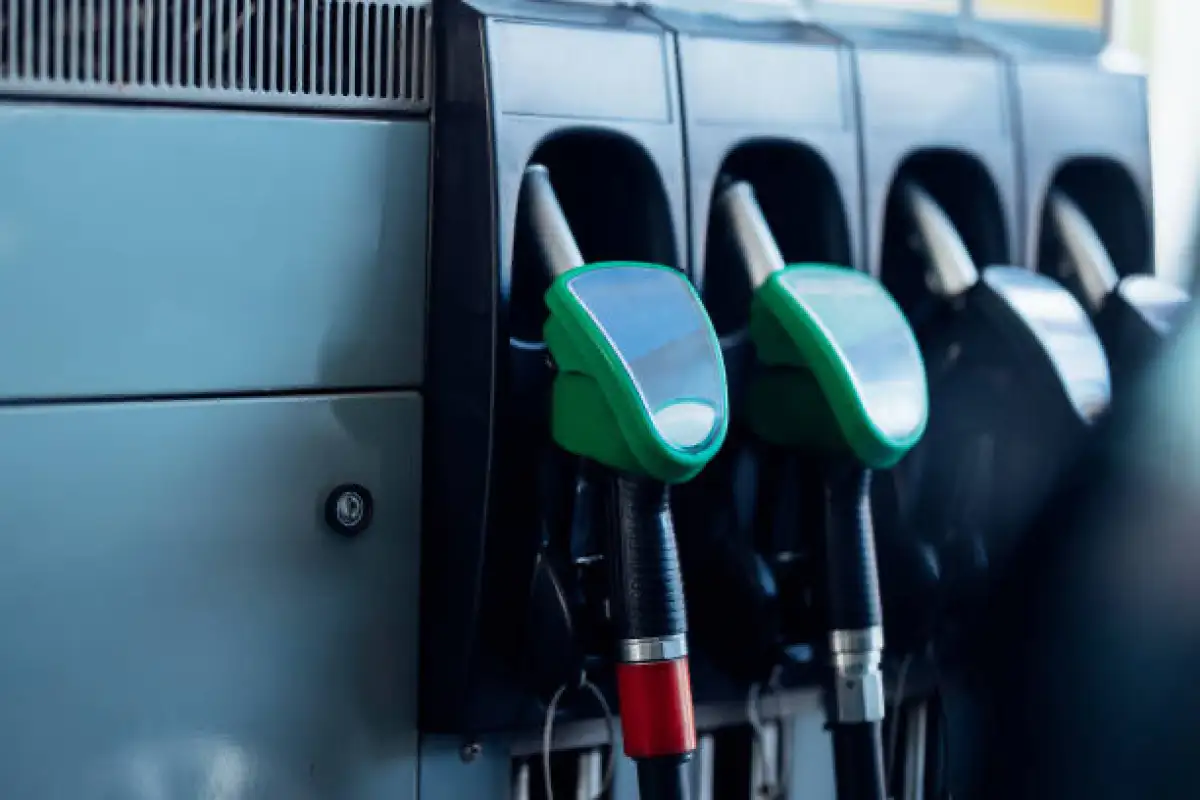Curious about the Toyota Rush fuel tank capacity and how it affects your everyday driving? In this guide, you'll explore the key aspects behind the 2025 Toyota Rush fuel specifications. Designed with the modern GCC driver in mind, the insights shared here will help you make informed decisions about fuel economy and vehicle performance.
What Is the 2025 Toyota Rush Fuel Tank Capacity?

The 2025 Toyota Rush features a robust 55-liter fuel tank capacity. This capacity is optimal for balancing your city commutes and long-distance trips, ensuring a smooth and efficient driving experience. The fuel tank is constructed from high-density polyethylene, which helps in maintaining fuel purity and overall efficiency. With a recommended use of regular unleaded fuel, drivers can expect a reliable and consistent performance whether navigating urban roads or highways.
Key Technical Specifications
Fuel tank material:High-density polyethylene contributes to durability and performance.
Fuel type:Regular unleaded fuel is recommended for optimal combustion.
Range estimation:Depending on driving patterns, expect around 650-750 km per full tank, offering a comfortable safety margin for both city and highway journeys.
Why Fuel Tank Capacity Matters for Drivers

Understanding the Toyota Rush fuel tank capacity is crucial for planning refueling stops and optimizing your driving range. A well-sized fuel tank ensures you can travel longer distances between stops, which is especially valuable when driving across long stretches in the UAE or beyond.
Factors That Impact Your Driving Range
Driving habits:Aggressive acceleration can decrease fuel economy by 15-20%, so smoother driving not only conserves fuel but also enhances vehicle longevity.
Road conditions and terrain:Tackling hilly or mountainous terrain may result in higher fuel consumption, while flat highways offer better fuel efficiency.
Vehicle load:Carrying extra cargo can decrease overall fuel economy by approximately 2-3% for every additional 100 kg, making it important to monitor what you carry on long trips.
How the 2025 Model Enhances Fuel Efficiency
The 2025 Toyota Rush retains a 55-liter capacity while introducing advancements in fuel management and aerodynamics. Enhancements in fuel injection systems and predictive eco modes work in tandem to ensure the vehicle is as fuel efficient as possible.
Feature | 2024 Model | 2025 Upgrade |
|---|---|---|
Fuel Injection | Multi-port | Combined direct & multi-port system |
Aerodynamics | 0.34 Cd | 0.32 Cd |
Eco Driving Mode | Standard settings | Predictive AI-assisted adjustments |
These improvements not only optimize fuel consumption but also deliver smoother acceleration and a more stable driving experience, ideal for both city traffic and highway cruising.
Maximizing Your Rush's Fuel Efficiency

To get the most from your Toyota Rush, incorporating effective fuel-saving practices is essential:
Smart Refueling Practices
Keep your fuel level above a quarter tank to avoid strain on the fuel pump.
Avoid excessive topping up beyond the auto shut-off mechanism to prevent fuel wastage.
Choose reputable fuel stations for consistency in fuel quality.
Routine Maintenance
Replace the fuel filter around every 40,000 km to keep the fuel system running smoothly.
Schedule an annual cleaning of the fuel injectors to maintain proper engine performance.
Have your tank seals inspected during regular service checks to prevent leaks.
Maintaining your vehicle and practicing efficient driving habits can significantly enhance your overall driving range and fuel economy.
Comparing SUV Fuel Capacities (2025 Models)

Choosing the right vehicle involves comparing specifications. Here's a quick look at how the Toyota Rush stacks up against other popular models:
Model | Tank Capacity | Average Driving Range |
|---|---|---|
55L | Approximately 700 km | |
Honda HR-V | 50L | Around 650 km |
Mazda CX-3 | 48L | Close to 620 km |
This comparative overview shows that the Toyota Rush provides an edge in terms of capacity and efficiency, making it suitable for demanding trips such as a Dubai-Abu Dhabi round journey.
When to Consider Tank Modifications
While the stock 55-liter capacity meets everyday needs, some drivers might explore aftermarket modifications. However, it is essential to weigh the pros and cons:
Consult authorized Toyota service centers before making any modifications to avoid voiding warranties.
Consider the financial impact, with modification costs potentially starting at around AED/SAR 2,800 for an upgrade of about 15 liters.
Think about your driving needs carefully—if you often embark on extended trips, a larger capacity might offer additional comfort and range.
A well-planned modification can be a smart investment, but professional advice is crucial to ensure safety and compliance with GCC standards.
FAQ

Q1:What is the fuel tank capacity of the 2025 Toyota Rush?
The 2025 Toyota Rush is equipped with a 55-liter fuel tank capacity. This design not only supports extended driving ranges but also ensures steady performance across various driving conditions. The capacity aligns well with modern urban and long-distance driving requirements, offering a balanced mix of efficiency and endurance. Many drivers in the region appreciate this attribute given the diverse driving conditions encountered daily.
Q2:How does the fuel tank capacity affect the vehicle’s driving range and fuel efficiency?
The fuel tank capacity directly impacts how far you can drive before needing to refuel, thereby influencing overall convenience on long journeys. A well-matched tank size helps maximize fuel economy by reducing the frequency of stops, which is an advantage in heavy traffic or on lengthy highway trips. Additionally, efficient fuel consumption is enhanced by advanced features in the 2025 model, ensuring that the 55-liter capacity is used to its fullest potential. Maintaining optimal driving habits further improves these benefits.
Q3:Can I upgrade the fuel tank capacity on my Toyota Rush, and what should I consider?
While upgrading the fuel tank capacity is possible, it is recommended to consult with an authorized Toyota service center. Upgraded tanks might promise longer ranges, but the costs can be significant, starting around AED/SAR 2,800 for modest increases. Drivers should also consider warranty implications and compliance with GCC certification standards. Evaluating the benefits against the financial investment will help ensure that any modification truly meets your needs.
Q4:What maintenance tips help in preserving fuel efficiency for the Toyota Rush?
Routine maintenance plays a vital role in sustaining fuel efficiency. Regularly replacing the fuel filter every 40,000 km, cleaning the fuel injectors annually, and checking the fuel tank seals are essential steps. These maintenance measures protect the engine and boost overall performance while ensuring that the vehicle runs efficiently even under varying driving conditions. Staying diligent with these checks can lead to noticeable improvements in fuel economy over time.
Q5:Is the improved fuel injection system in the 2025 model noticeable during city driving?
Yes, the upgraded fuel injection system in the 2025 Toyota Rush contributes to a smoother and more responsive engine performance, especially in stop-and-go city conditions. It optimizes fuel delivery, which helps in achieving better fuel economy without compromising on power. Drivers can observe a more refined driving experience, as the system adapts quickly to changing speed requirements. The result is enhanced performance and reliability whether you're navigating busy urban routes or enjoying longer highway drives.
This article is for reference only, please follow local latest laws and regulations.
Read More:
How to Check GCC Car Accident History in 2025:Your Complete Guide
How to Check the Owner of the Car by Number Plate in 2025
How to Check Car Fine in UAE (2025 Guide for Hassle-Free Verification)

Mustafa Karim, having been deeply involved in automotive research and development for over ten years. He is fond of Japanese cars, and their precise and energy-efficient features have influenced him. In his spare time, he loves Japanese anime and kendo, drawing inspiration from them for control system research and development. He also often shares cutting-edge automotive knowledge on platforms, contributing to industry innovation and adding strength to automotive development with his expertise.













